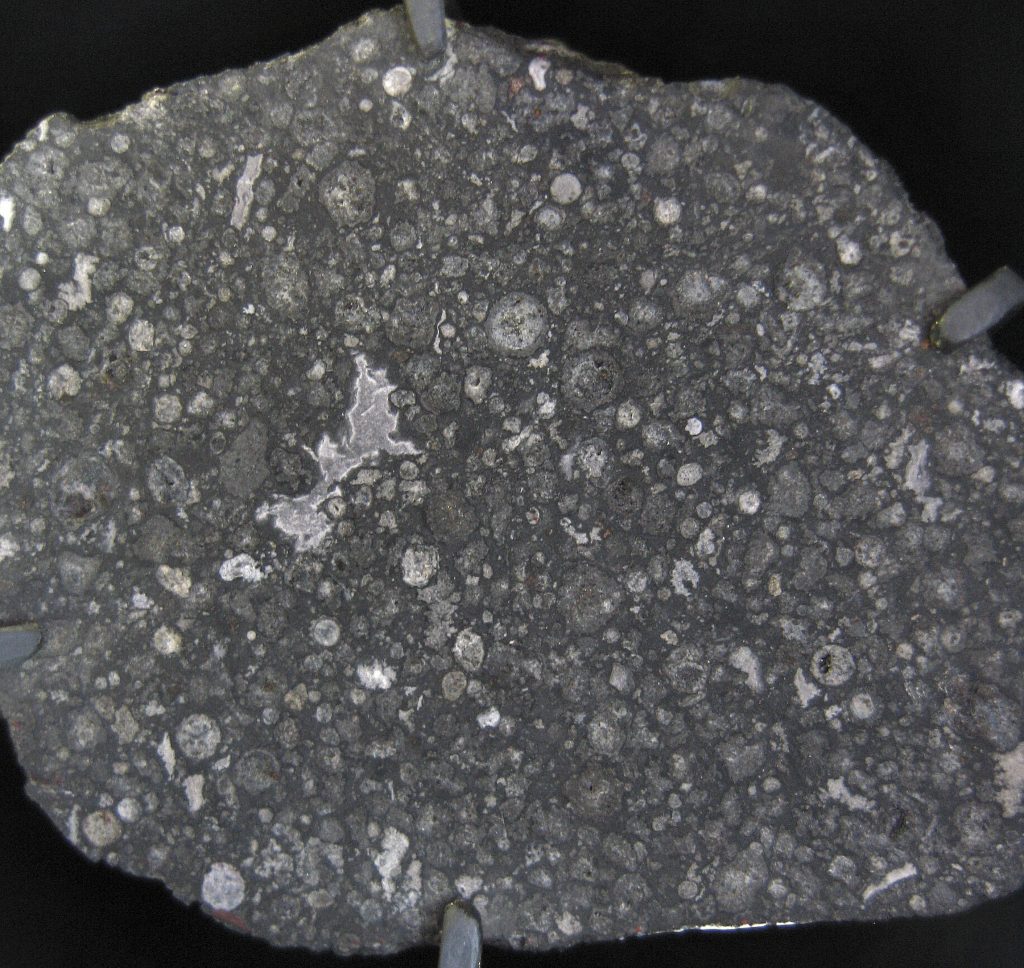Chondrites are named after the small, nearly spherical grains called chondrules that they are made of. These chondrules were molten droplets that accreted in the early solar system, 4.5 billion years ago! As chondrites are comprised of numerous chondrules cemented together we know that they have not undergone any melting since formations. This means that by studying pristine chondrules, scientists can examine the chemistry and physical properties of the early system. It is from these primitive meteorites that we have been able to decipher how our solar system evolved from a cloud of hot gas and dust to the large planetary bodies we see today.
There are three main types of chondrites:
- Ordinary Chondrites – Ordinary chondrites get their name from the fact that they make up a majority of chondrite finds (~90%). Despite their name, they are far from ordinary as they are dominated by chondrules. In addition to the chondrules and the matrix that binds the chondrules together, there is usually Fe-Ni metal found in most chondrites. Ordinary chondrites are further divided (H, LL, and L) based on their metal content.
- Carbonaceous Chondrites – Carbonaceous chondrites are some of the most pristine and primitive material found within the Solar System. These chondrites are much more similar in composition to the Sun than ordinary chondrites and can contain phases altered by water and some can contain large amounts of organic matter.
- Enstatite Chondrites – Enstatite Chondrites are unique because represent a reduced environment within the Solar System. These chondrites are unique because in many regards the chemical composition of these chondrites are very similar to the Earth and have been suggested to be important building blocks in our planet's formation.
The study of these chondrites has been essential in understanding the age of the Solar System and the sequence of events that resulted in the Solar System as we see it today. With these building blocks, we will continue to uncover the evolution of how our Solar System came to be.
